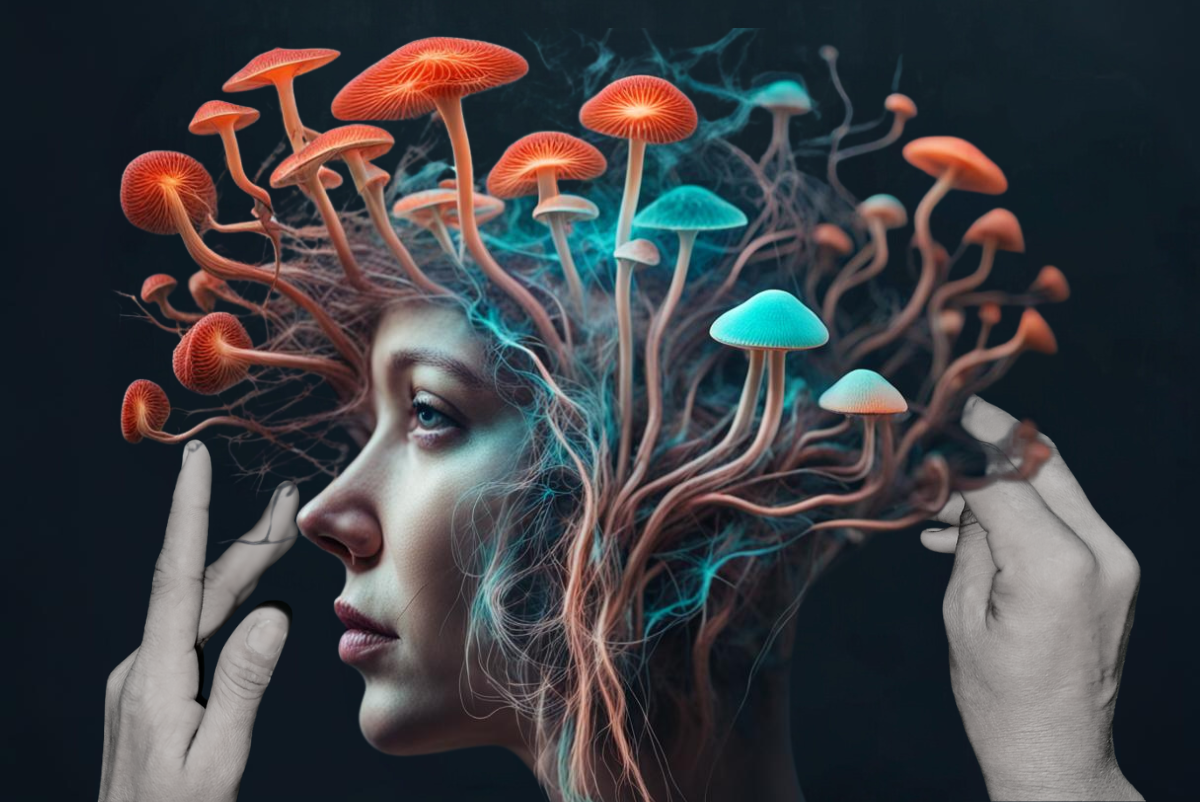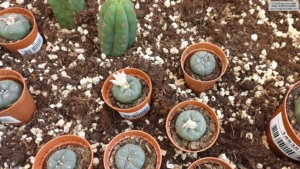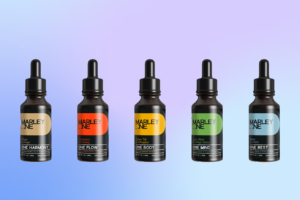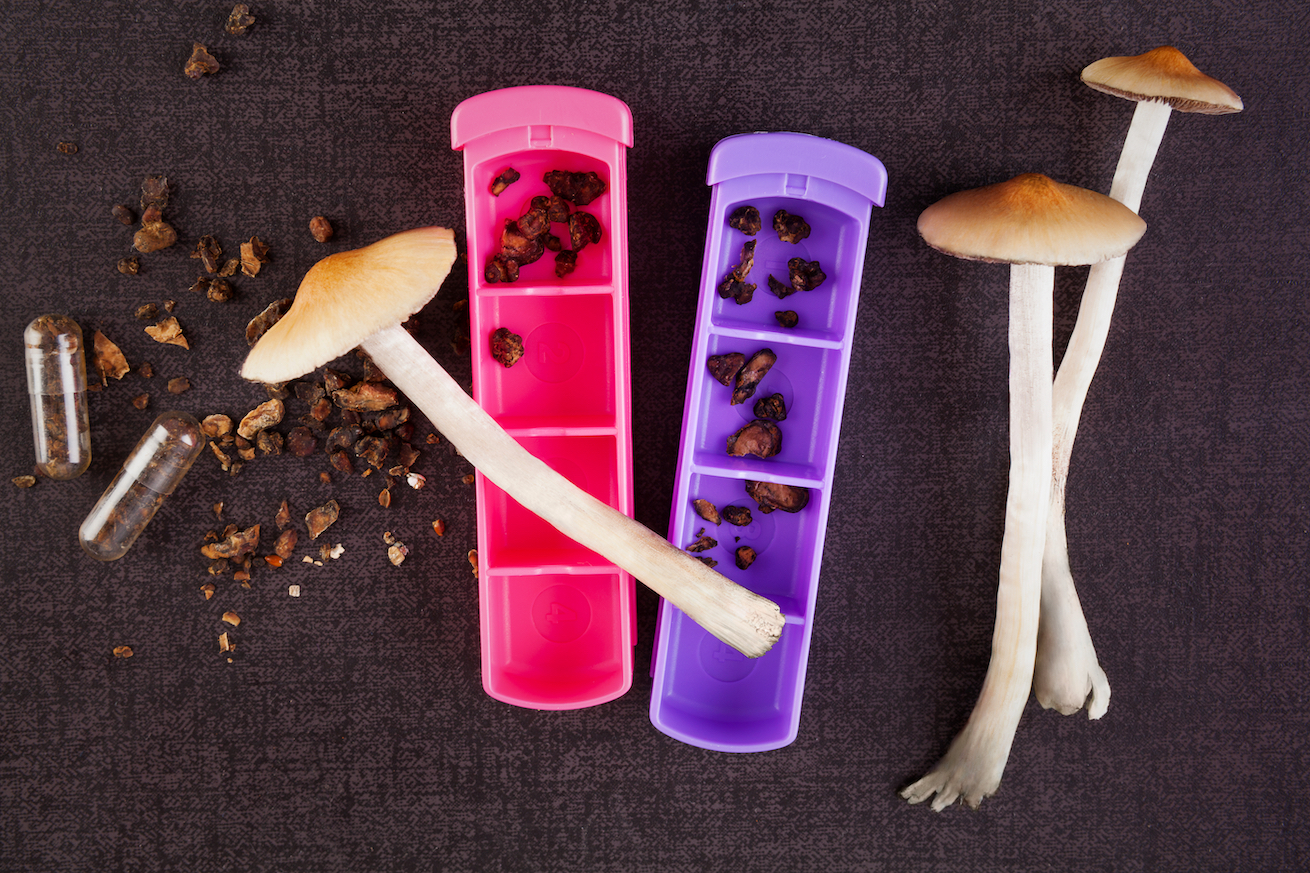
Over the past several years, the practice of microdosing psilocybin mushrooms has ballooned in popularity. With purported benefits of improving mental health, creativity, and focus, many people are looking online to determine if the practice works, what exactly it does, and how they can start Microdosing themselves.
Unfortunately, the internet can be a dark and scary place, rife with misinformation. Therefore, Psychedelic Spotlight is offering this beginner’s guide to microdosing mushrooms, to help people who want to learn more about the practice in a safe and accurate manner. Take a look through these five easy steps to see if this practice lives up to the hype and if it may be right for you.
***Disclaimer: this article is for entertainment and educational purposes only. Psychedelic Spotlight does not condone the use of drugs in jurisdictions where they are illegal.***
What Is Microdosing and What Are the Benefits?
In simple terms, microdosing is the practice of taking a very small dose of a drug—in this case psilocybin. The dose should be small enough that it won’t cause any perceptual changes, meaning you won’t have any hallucinations or even feel high. This will allow you to continue to go to school, work, or operate in social settings as if you had taken nothing at all.
So then, if you don’t “feel” anything, what is the point of microdosing?
Well, according to thousands upon thousands of anecdotal stories over decades, microdosing psilocybin is purported to:
- Improve your creativity
- Help you enter states of flow, also known as “being in the zone” or entering a mental state of total energized concentration
- Help alleviate feelings of stress and anxiety
- Improve focus and concentration
- Improve relational awareness and
- Speed your reflexes
Unfortunately, we have to rely on anecdotal evidence because, until recently, very little scientific study has been done on the subject of microdosing. That, however, is starting to change with many clinical studies underway. There is some existing research however. A 2023 new study, published in the journal of Nordic Studies on Alcohol and Drugs Online found that microdosing makes people feel more authentic. The participants reported experiencing significantly higher levels of state authenticity on the day they took a microdose and the day after compared to other days. To find our more about the study results, click here. Another study, published in Scientific Reports evaluating the microdosing practices, motivations, and mental health of self-selected microdosers and non-microdosers, found that microdosers are less likely to consume alcohol and were most likely to abstain from consuming alcohol entirely.You can read more about this study here.
Despite a lack of hard scientific data, the practice is sworn upon by many in high pace environments, such as Silicon Valley. A couple famous examples of Microdosers include: Paul Stamets and Steve Jobs, though for the latter it was more LSD Microdosing.
You may also like: How to Microdose Psilocybin According to Paul Stamets: The Stamets Stack
Is there a microdosing protocol I should follow?
Yes. Before embarking on a microdosing regimen, it’s crucial to establish a structured schedule to maximize its effectiveness and prevent tolerance from developing. Typically, a complete microdosing protocol spans four to eight weeks, followed by a resting period lasting two to four weeks. This resting phase is essential for maintaining the desired effects over time.
After the initial month, assess whether the current protocol aligns with your needs. If it works well for you, you can continue it for an additional month before another rest period. Alternatively, you have the flexibility to explore different protocols during subsequent months, each lasting a month with a subsequent rest, or simply rest before beginning the next month of microdosing. This approach allows for customization to suit your individual preferences and requirements.
You can take a look at the different types of protocols by reading: A Beginners Guide to 6 Effective Microdosing Protocols
Now that we have a good understanding of what Microdosing Magic Mushrooms is and its purported benefits, let’s take a look at how a person may go about Microdosing, in 5 easy steps.
Join a Mushroom Retreat in Mexico

Step 1: Journal
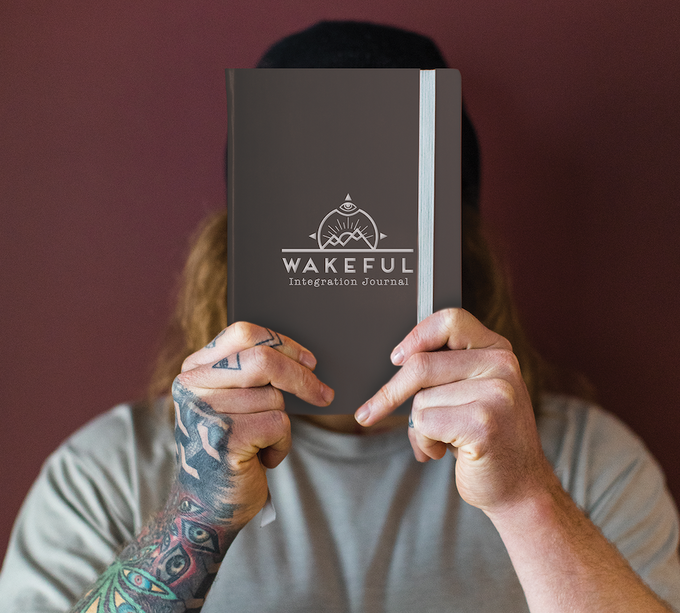
Now, you may be a tad confused. You might be thinking: This is a guide for microdosing psilocybin, why is journaling step 1?
Well, it turns out that journaling is an essential part of the microdosing process. The Wakfeful Travel journal, currently being funded on Kickstarter, is specifically designed for a 6-week microdosing framework. It can help you crystalize your goals, track your progress over time, and become more attuned to your body and mind’s reaction to the miniscule dose.
Even if you don’t plan on microdosing, journaling daily has been shown to have a host of benefits for your mental health. Combining it with microdosing is a perfect way to turbo-charge the journey to self improvement.
Now, you actually want to start journaling at least a week before you take your first microdose. You don’t have to do much, just spend a few minutes before bed jotting down several factors such as:
- Your mood throughout the day
- Your concentration and energy levels
- Any specific areas of your life you want to improve in; maybe paying more attention to your spouse, being a better student, or improving your flaming knife juggling skills (don’t try this at home!)
The last point here is super important. Not the juggling flaming knives, but rather going into the microdosing process with set goals. The purpose of microdosing is to improve aspects of your life, which won’t happen unless you have taken the time to reflect on the aspects of your life you want to change.
Once you begin taking your microdoses, after a week of journaling, it is essential that you continue the daily journaling process. Reflect on your mood, concentration levels, and what you did to improve upon your goals.
With journaling, microdosing can change your life. Without journaling, you are grasping blindly for improvements.
Step 2: Measure Your Microdosing
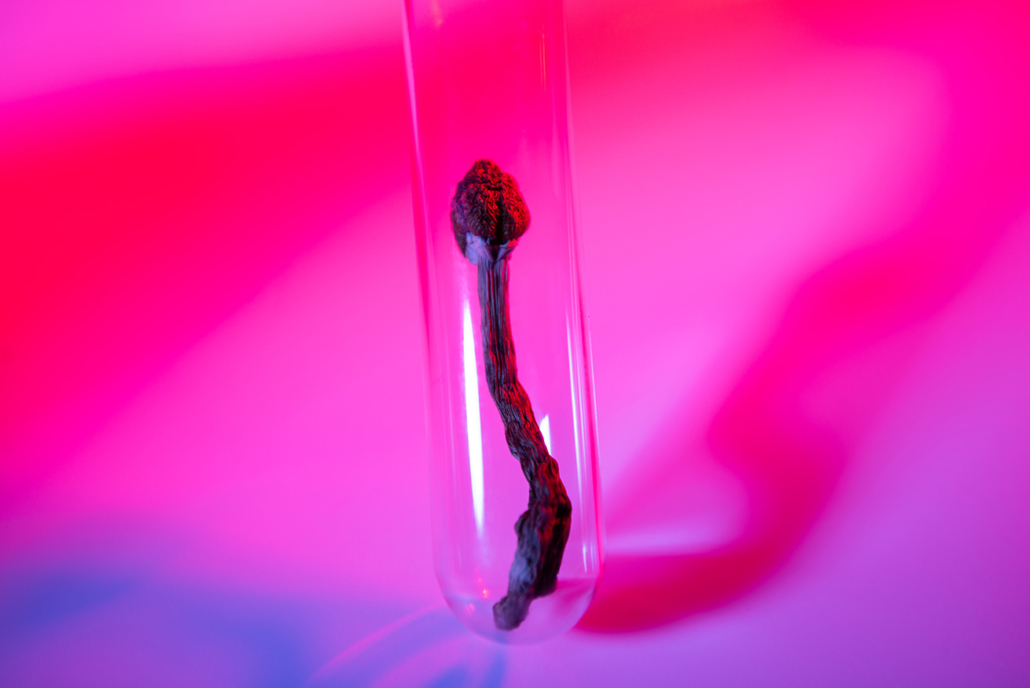
This is actually the step that most people mess up.
Often, someone will attempt to microdose mushrooms, but will take WAY too much! It is essential that you remember the “micro” in microdose.
Frequently, people will think to themselves, “Oh, I don’t feel any different, I must not have taken enough, I’ll have some more.” And then be operating on a low, not-microdose. If you do this frequently it will nerf your tolerance, and you may not get the long term benefits of microdosing.
If you have never microdosed before, a good starting point is 0.1 grams of dried mushrooms. Depending on your body size you can go higher, perhaps up to 0.2 grams, but it is better to start low for a month and then recalibrate.
It is essential that you buy a scale, and not just eyeball what 0.1 grams looks like. This is a very small amount, and without measuring, it is very likely that you may take 0.3-0.5 grams. Plus it is essential that you take the same amount on each dosing day, which eyeballing it just doesn’t allow for. Don’t worry, scales are cheap, often under $10.
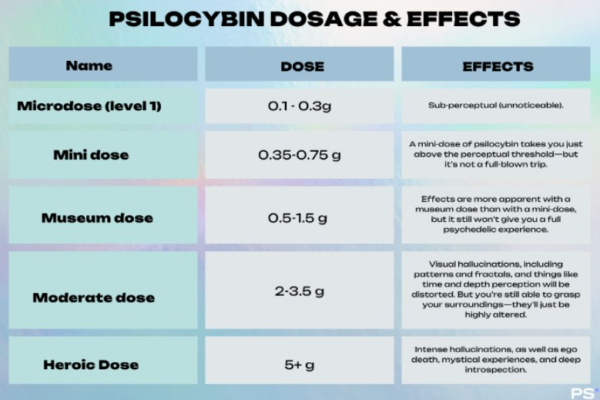
Find out more about the effects by dose in our Guide To Psilocybin Mushrooms
You can prepare your doses in two ways: first, you can measure out each time you are microdosing; or you can spend an hour prepping for your entire experiment by grinding the dried shrooms into a powder, then filling up empty pill capsules with 0.1 grams each.
Either way, it is important to store your mushrooms in a dry, cool environment, where they are not in direct sunlight.
It is important to know the amount of psilocybin in the strain of mushrooms you consume. For instance, Penis Envy is very strong while Golden Teachers are a moderate strength option.
Step 3: Schedule
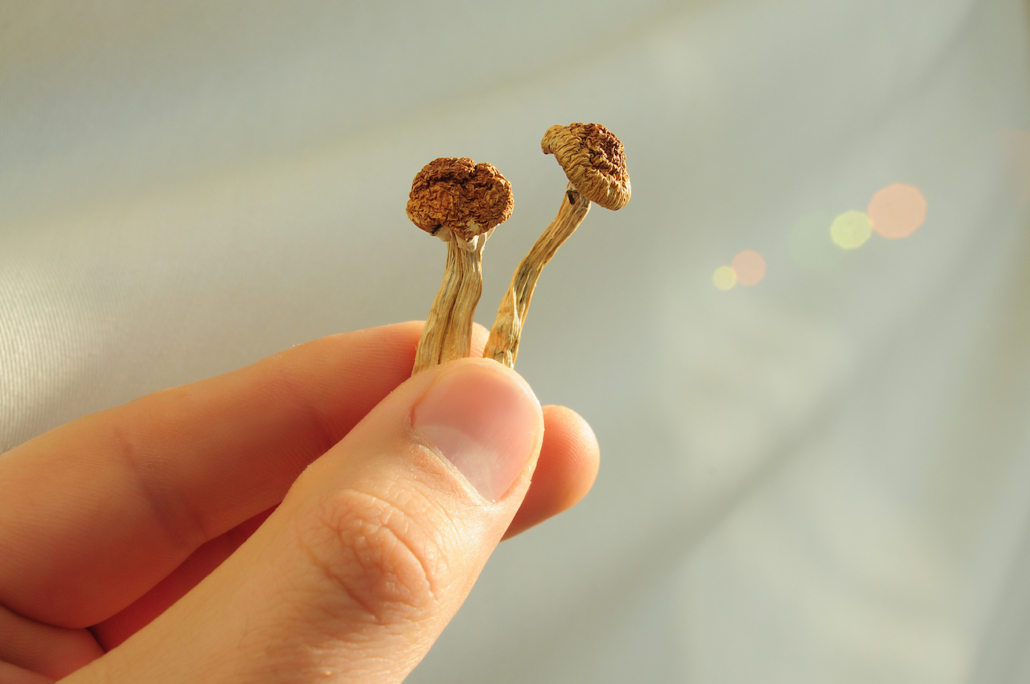
Once you have prepared your doses, you need to decide how you are scheduling your microdosing journey. Even at such a tiny dose, your body can still build up a natural immunity fairly quickly, so it is important that you take breaks.
There are a few common schedules that we will discuss here.
First, the most famous and classical one is a microdose every 3 days.
The idea behind this is on the first day you feel the full effects, on the second day you still feel about ½ the effects as the substance is still in your body, and the third day is a tolerance break.
If you stick with this schedule, taking 0.1 grams every 3 days, you should manage to avoid building up a tolerance.
Some people also do it every other day, which may work for them, but for beginners, we would still suggest every third day.
Another common regime is one week on and one week off. This would average out to every other day, but by having a full week off, you can rebuild your tolerance.
Since there hasn’t been a lot of hard core scientific study on the best regimes, you should choose the one that seems most appealing to you, and stick with it for a minimum of a month.
The key here is consistency. A lot of the benefits of microdosing come over time, not on the first or second day, so whichever schedule you choose, make sure you stick by it. As you record in your journal your progress, by about a week in you should be noticing significant improvements to focus, creativity, and ability to get into states of flow.
Step 4: Listen to Your Body

It is important that you stick with your original schedule for at least a month to give your body and mind time to adjust, and for you to have had enough time to make adequate reflections on the effectiveness of your microdosing journey in your journal.
However, after your first month, depending on how you feel, you can rejig your regime. Every person is different, as is how their body reacts to a drug. If you are a bigger person, for example, perhaps you might want to add a little more. Don’t go overboard, but upping your dose to 0.2-0.3 grams may be reasonable. Or perhaps you feel you don’t need to take as much as you currently are, and bring down the schedule to once a week.
You can figure out how to shift your process by going back and reading through your journal, and seeing how you have felt on days where you took a dose, and how you felt when you were on an off day.
Again, everyone is different, so just listen to your own personal body and emotions to figure out what is right for you. Microdosing mushrooms is an inexact science, so you just have to do what is right for you personally.
Eventually, maybe after a month, or maybe 3 months or a year, you will feel like you don’t have to be microdosing any longer. You may feel like you retain the benefits even if you are not taking a weekly dose.
Once this happens, feel free to take a protracted break. This could be a full month off, or longer. It may even be a year or multiyear period, or perhaps you can switch to only microdosing when you have something specific you need a boost for, such as a stressful social situation or a date.
While you are in this break, it’s important that you continue to journal. For one, this is still beneficial for you. But for another, this will help you decide when and if you should start microdosing again.
Step 5: Improve Other Aspects of Your Life

This is less of a step, and more of something you should be consciously doing since the very beginning.
Remember, if you are microdosing, it should be to improve specific aspects of your life, such as your concentration, ability to speak in social settings, etc. You are not just taking magic mushrooms to get high. In fact, if you are getting high, you are doing it wrong.
The entire time you are microdosing, you should keep in mind your goals, and be recording daily in your journal how much progress you have made towards said goals.
Something that can help is that when you are journaling, set a checklist of things to try to do the next day. Take it slow, take baby steps. Don’t have as your first goal become a billionaire. But maybe, work for 3 hours straight without taking a break.
While you are microdosing, you may also try to become healthier in your day to day life. Not only will microdosing make this easier, but by being healthy, the positive benefits will multiply. Some examples of areas you can try to become healthier in are: eating better, exercising at least a couple times a week and having a better sleep schedule. Meditating is also a fantastic way to boost your microdosing experience.
Something important is to remember that microdosing mushrooms is not a magic bullet (pun very much intended). At best it will help you achieve your goals, it won’t achieve them for you.
You still have to put in work. (I know, oh the horror!)
How To Take Your Microdose

After preparing your mushrooms into doses and choosing your schedule, it’s time to take your microdose. You have multiple ways to consume it. The most popular method is to measure the correct dosage and put it in empty capsules. This ensures even distribution and hides the taste. Additionally, it’s convenient for traveling and scheduling doses.
You can make magic mushroom tea by dissolving your desired amount of mushrooms in hot water, similar to making loose-leaf tea. If you have powdered mushrooms, they will dissolve completely. If you have whole mushrooms, they will steep like regular tea. It’s not recommended to try Lemon Tekking, which involves mixing psilocybin mushrooms with citrus juice. This method is mainly for high-dose trips and may make the experience stronger than intended.
How to Source Your Psilocybin Mushrooms
It is important to carefully consider how you source your mushrooms. The first step is to gather reliable and truthful information. You can obtain mushrooms from various sources such as garden shops, websites, pharmacies (in regions where psychedelic mushrooms are permitted), and eBay. If you are new to mushroom cultivation, using mushroom grow kits would be an excellent option. There are many ways to grow psilocybin mushrooms, however, the most popular method is the “PF Tek” technique. Adding vermiculite to a grain-based substrate is a new technique for growing mushrooms indoors. This method provides more space for the mycelia to grow and mimics natural conditions. Alternative methods include using straw or sawdust as a substrate or using a fully automated mushroom growing kit, which requires minimal technical knowledge.
It’s important to know that picking the right kind of mushrooms can be risky and hard since some non-psychedelic mushrooms look similar but can be poisonous. While growing mushrooms from the beginning can be rewarding, it might be tough to get it right. If you want an easier way to do it at home, take a look at Psychedelic Spotlight’s “How to Grow Magic Mushrooms at Home Guide“, “What are psilocybin spores” and “12 Things to Know Before Buying Psilocybin Spores.”
Microdosing Research
Two major papers were published about microdosing and its potential benefits and drawbacks. The first paper, published in the Harm Reduction Journal, involved 278 participants mainly recruited from Reddit. The paper found that 26.6% of participants reported mood improvement, including a decrease in depressive symptoms; 14.8% said it helped them to focus; 12.9% experienced improved working memory, and 11.3% reported increased self-efficacy.
According to the same paper, 18% of the participants reported experiencing physiological discomfort like headaches, nausea, and insomnia. Additionally, 29.5% of them pointed out that the illegality of psychedelics was a concern because of various reasons such as stigma, impure substances, and inaccurate dosing levels.
According to a publication in the International Journal of Neuropsychopharmacology, a study was conducted on 1,116 people who microdosed. The study found that the primary reason for microdosing was performance enhancement. However, the study also revealed that the main reason people stopped microdosing was that they did not experience the intended effects. No new details or facts were added in this rewrite.
The way that psychedelics work is closely connected to serotonin, which is a crucial neurotransmitter in the brain that affects our mood and cognitive abilities. Serotonin is essential for our brain to function properly. Drugs like LSD and psilocybin have a similar structure to serotonin, and their effects mimic this chemical. You can learn more about the differences between LSD and psilocybin in the article “LSD vs Shrooms“.
According to Waldman, the production of “Brain-Derived Neurotrophic Factor” (BDNF) stimulates the growth, connections, and activity of the brain. BDNF is likened to Miracle-Gro for the brain. Additionally, the neurotransmitter called Glutamate, responsible for cognitive functions like learning, memory, and cognition, has been found to have increased transmission.
Happy Microdosing!
